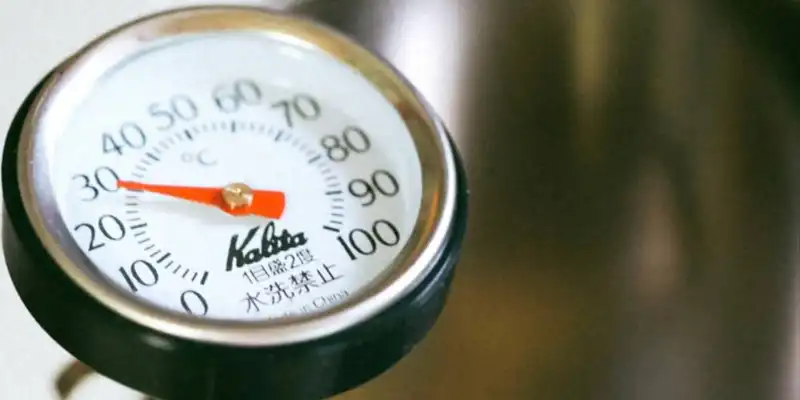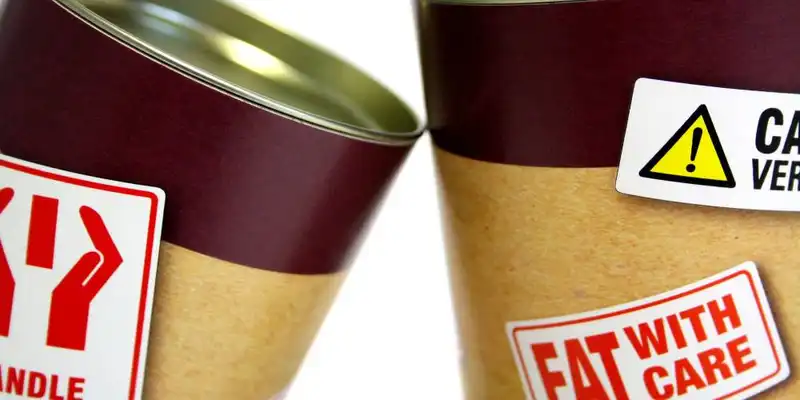Monitoring & Maintaining Temperature of Stored Food
Introduction
The restaurant industry has undergone a number of dynamic shifts now, more than ever, as people are more aware of quality standards and the risk of foodborne illnesses due to contaminated food.
To avoid serving such food, it is vital to develop a temperature monitoring system that consists of storing raw materials at recommended temperatures. There is no room for error if food is not kept at its ideal temperature, there is a high chance that people will be infected with small or even severe food-borne illnesses.
In fact, as per the World Health Organization, 1 in 10 people fall ill after consuming contaminated food and 420,000 die every year. As such, all businesses in the industry need to guarantee that they serve quality food at all times this is also an essential part of maintaining a good image and reputation.
Temperature Control Is Vital for Ensuring Food Sanitation

As mentioned above, the leading cause of foodborne illnesses is a result of not implementing a temperature monitoring system and keeping raw materials below or above the recommended temperature for more than the suggested time.
Food that needs to be stored at certain temperatures and time is known as TCS (temperature control for safety). This includes meat, milk, fish, crustaceans, tofu, beans, rice, etc. These must be kept out of the temperature Danger Zone to prevent the production of toxins and the growth of harmful microorganisms.
Danger Zones
Serving good quality food as per legal safety standards is extremely important for protecting your customers. As a bonus, this also ensures that you will pass your inspections with flying colors.
So, whether you serve an a la carte menu or you run a huge buffet, food safety should never be taken lightly. For this, you need to ensure that everything is served and stored at the right temperature.
The ideal environment for bacteria infestation is when temperatures are between 70 -125 F and so, food enters the danger zone when the temperature is between 41-135 F.
Additionally, it's important to remember that the longer the food is kept in the danger zone, the higher the chances are that it would become contained beyond a point of no return.
Food should be discarded once it reaches a certain level below standards. All eateries are recommended not to leave their food in the danger zone for more than two hours. If it reaches beyond this, they are strongly advised to discard all items. Also, frozen food should be kept below 40 F, whereas items that are served hot should be kept at a temperature above 140 F.
Making Sure That Danger Zones Are Never Reached

For starters, all food should be kept, cooked, and cooled at the recommended temperatures.
To ensure that these guidelines are properly followed, you need to take note of the temperature in real-time and make sure that there are no fluctuations. This can be done by using a thermometer or an automated temperature control system.
As a good precaution, the preinstalled thermometer within your freezers should be continuously monitored and you should use an external one for authentic readings.
To avoid cases of cross-contamination, it's also important to clean your thermometer regularly, and to maintain accuracy, you should recalibrate it before each reading.
Cooking Food at the Right Temperature
Raw meat, fruits and vegetables may be bacteria-ridden because of the environment they come from. For instance, the soil that was used to grow them can account for this.
To get rid of potential bacteria, these should be cooked at around 167 F for a minimum of two minutes.
This temperature reading can be done with a thermometer, while the staff should maintain a time-stamped journal of all temperature readings.
Chilling Food at the Legal Requirements
Properly freezing food items or raw materials can restrict the bacteria from spreading further, but it does not eliminate the risk entirely.
The temperature benchmark is set at 46.4 F for perishable items like meat, eggs and milk. On the other hand, frozen items should be kept at or below -0.4 F.
Storing Food in the Correct Manner
Whether you are serving hot or cold, it is imperative that it should be stored in an adequate manner at the right temperature until it is served.
Many eateries serve customers at a later time. Possible instances include food delivery services, catering services, salad bars, etc. In such cases, all items should be properly stowed in an insulated bag to ensure that they stay within the recommended temperature range.
Storing Cold Food
The equipment utilized to store food should always have a temperature of below 41 F and food should be kept covered to safeguard from airborne contaminants.
Frozen or cold food can be kept outside for up to six hours if it is removed from a refrigerator with a temperature below 41 F but if it reaches above 70 F, it should not be consumed.
To avoid cross-contamination, it's generally a good idea to never place it directly under ice the only food permissible to be kept on ice includes shellfish, fruits, and vegetables.
Storing Hot Food
The equipment used for storing hot food is designed to maintain a certain temperature, but these don't have the capability to reheat food. For instance, many restaurants serve food in aluminum foil enclosed containers to keep it hot.
But if the dish is left outside for more than two hours at a temperature below 140 F, you should discard it immediately.
Proper Temperature Control Reduces Wastage of Food
In 2016, Starbucks signed an agreement with Feeding America to donate all ready to eat items that do not comply with the set freshness standards from all stores across America.
The process was started by baristas who packed the food at 41 F or below for transportation in a temperature-controlled truck. The temperature within the truck was continuously monitored, and when the food reached the bank, it was inspected to recheck the temperature.
The aim was to distribute the food within 72 hours to avoid threats of potential contamination, but if it was kept out in the open for more than two hours, it was discarded.
It is amazing how Starbucks was able to provide 50 million meals annually through proper temperature control.
How Often should Temperature be Recorded
Restaurants should typically check the temperature every four hours, but shorter intervals can provide you enough time to take certain measures to protect your food from being contaminated.
If the temperature has dropped below the recommended range for hot food, you can reheat it and if the temperature has gone above for cold food, you can re-chill it.
Consequences of Negligence

If restaurants fail to follow Food Safety and Sanitation Standards set by the FDA and other food-based authorities, the consequences can be dire.
These protocols are set in place to protect consumers from foodborne illnesses and other health-related issues.
For instance, if proper temperature control is not prioritized, food can be contaminated by Salmonella, Campylobacter, Listeria and E. coli.
Restaurants now understand how severe the consequences can be, which is why there is a high frequency of food recalls in the US. For instance, between 2013 and 2018, there were 83% recalls of meat and poultry products that had severe health risks.
Why Conventional Methods of Recording Temperature Not Accurate
Many restaurants still rely on traditional ways to follow and maintain food safety standards for example, through a paper-based system.
As can be seen, controlling the temperature of your food from the initial stage until it is served is a critical part of ensuring safety and proper sanitation.
Restaurants train their staff to monitor the temperature of all the equipment as well as the food. Temperature readings are taken from pre-installed thermometers in the equipment and an external probe thermometer is used to get authentic results.
These ways have been followed in the past as there were no alternatives but now, technological advancements have brought forward many alternatives that can eradicate problems such as
Human Error
Even though employees are well trained, there is a chance they may knowingly or unknowingly make a blunder.
A good restaurant has to face many big and small issues on a daily basis, and an employee doing safety checks while juggling other tasks may falsify results or take a wrong reading.
For instance, if the fridge is operating for more than four hours at 43 F instead of the recommended 41 F, the employee could fail to notice or report such a seemingly minor change. But with TCS products, there is a high chance that they will not be consumable.
Cross-Contamination
On each reading, the probe thermometer should be properly wiped before being used to check other equipment and food items. But if a staff member fails to do so, chances are that other food items may be contaminated.
Malfunctioning Thermometers
A thermometer needs to be recalibrated on a regular basis, but what if a staff member fails to do so over a period of time and the thermometer displays a wrong result that is recorded.
An ideal scenario is to find an alternate method to automate the temperature recording process for accurate results without human intervention.
Making Sure Food Is Always Kept Out of Harm's Way

One way to make sure that all the required Food Safety and Health codes are being properly met is to use Zip HACCP.
Zip HACCP is a Hazard Analysis Critical Control Point (HACCP) compliant software that can manage all the temperature requirements for your facilities' equipment and food.
The BU 2 Bluetooth temperature monitor is seamlessly paired with Zip HACCP this reduces the room for human error as all recorded temperatures are directly fed into the system and stored in an organized manner.
Remote Monitoring
The temperature can be easily maintained and does not need to be checked frequently and if there is a critical issue, administrators will be notified immediately.
Reduced Wastage of Food
Zip HACCP continuously monitors the temperature if there is a sudden drop or rise, an alert in the form of a push notification is sent to authorized users. Remember, if the change in temperature is controlled within two hours, chances are that your food will not spoil.
Improved Efficiency
Zip HACCP is a robust solution for maintaining and managing all Safety Standards and Sanitation requirements. The software ensures that all tasks are handled in a timely manner, and operations run smoothly and efficiently.
The conventional way required an employee to take temperature readings and record them with associated timestamps with Zip HACCP's revolutionary capabilities, this is no longer needed.
The Verdict is ...
All in all, controlling and monitoring temperature standards is vital for maintaining food quality standards and protecting your customers from illnesses. By using Zip HACCP's temperature control and monitoring software, you can be assured that your food is safe for human consumption.
Start your free trial and optimize your operations to match industry best practices and food safety standards.












